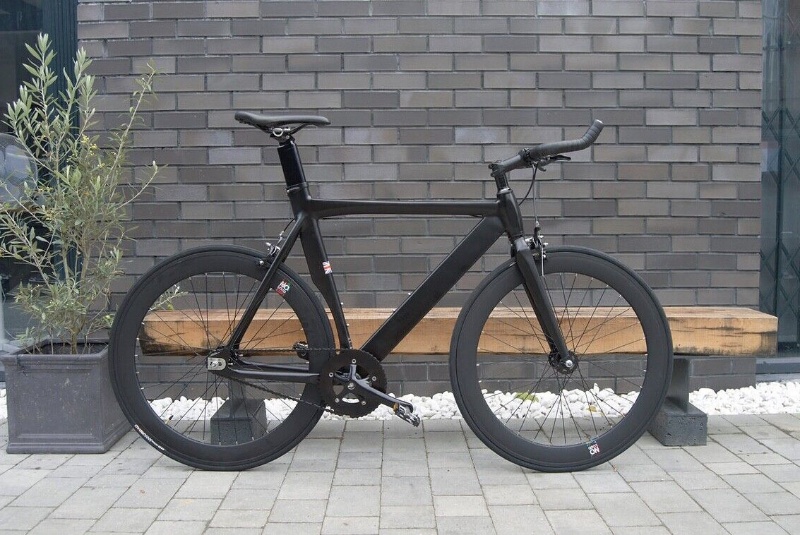Most second hand bikes are sold by private sellers, and while the price may be cheap, it can carry a lot of risks because you don’t know its history or if it’s potentially damaged. Thankfully, there are a lot of other outlets where you can find a cheap used bike without worrying about risks, such as speciality used-bike marketplaces that have a more focused and curated selection of pre-owned bikes. Find out more and get a cheap used bike that will last a lifetime!
Tips for Finding the Best Affordable Second-Hand Bikes
In today’s world, cycling has become more popular than ever. It’s an eco-friendly, healthy, and cost-effective way to get around. If you’re considering buying a bike but don’t want to break the bank, second-hand bikes are a fantastic option. However, finding the best affordable second-hand bike can be a bit of a challenge. Here are some valuable tips to help you make the right choice.
1. Set a Budget
Before you start your search, it’s essential to determine how much you’re willing to spend on a second-hand bike. Setting a budget will help you narrow down your options and prevent you from overspending. Consider how often you’ll use the bike and what features are most important to you, such as bike type, size, and brand.
2. Research Different Bike Types
Bikes come in various types, including road bikes, mountain bikes, hybrid bikes, and more. Each type is designed for specific purposes and terrains. Research the different bike types to understand which one suits your needs and preferences. If you plan to commute in the city, a road bike may be your best bet, while a mountain bike is ideal for off-road adventures.
3. Determine the Right Size
One of the most crucial aspects of finding the perfect second-hand bike is ensuring that it’s the right size for you. Riding a bike that is too big or too small can lead to discomfort and potential health issues. To determine the right size, measure your inseam and use online sizing charts provided by bike manufacturers. When you visit sellers or shops, test ride bikes to confirm the fit.
4. Check the Frame Material
Bike frames are made from various materials, each with its unique characteristics. Common frame materials include aluminum, steel, carbon fiber, and titanium. Aluminum frames are lightweight and durable, while steel frames offer a smooth ride but can be heavier. Carbon fiber frames are known for their stiffness and low weight, making them popular among road cyclists. Consider your riding style and priorities when choosing a frame material.
5. Inspect the Bike’s Condition
When buying a second-hand bike, it’s crucial to thoroughly inspect its condition. Check for any signs of wear and tear, such as rust, dents, or scratches. Pay special attention to the bike’s drivetrain, wheels, brakes, and suspension (if applicable). A well-maintained bike will save you money on repairs in the long run. If you’re not confident in your ability to assess the bike’s condition, consider bringing a knowledgeable friend or a bike mechanic with you.
6. Ask for Maintenance Records
If possible, ask the seller for any maintenance records or receipts related to the bike. This information can give you insight into how well the bike has been taken care of and whether it has had any major repairs or upgrades. A bike with a well-documented maintenance history is often a safer bet.
7. Test Ride the Bike
Never skip the test ride when buying a second-hand bike. It’s the best way to assess how the bike feels and performs. Pay attention to how it handles, whether the gears shift smoothly, and if the brakes are responsive. During the test ride, you can also evaluate the bike’s comfort and fit. If the bike doesn’t feel right or has any issues, it’s a sign to keep looking.
8. Negotiate the Price
Don’t be afraid to negotiate the price with the seller. Second-hand bike prices can be flexible, especially if you’ve done your research and found comparable listings. Be polite but firm in your negotiations, and don’t be afraid to walk away if the price doesn’t meet your budget or expectations.
9. Research the Seller
It’s essential to know who you’re buying from when purchasing a second-hand bike. If you’re buying from a private seller, ask questions about the bike’s history and why they’re selling it. If you’re considering a bike shop or online marketplace, read reviews and check their reputation. Trustworthy sellers will be transparent about the bike’s condition and provide accurate information.
10. Consider Additional Costs
When budgeting for your second-hand bike, remember to factor in additional costs. You may need to invest in accessories like a lock, lights, helmet, and maintenance tools. Additionally, consider ongoing maintenance expenses, such as regular tune-ups and replacement parts. Being prepared for these costs will ensure that you get the most out of your affordable second-hand bike.
11. Be Patient
Finding the perfect affordable second-hand bike may take time. Don’t rush the process, and be patient in your search. Keep an eye on various listings, both online and offline, and wait for the right opportunity to come along. Being patient will increase your chances of finding a bike that meets your needs and budget.
12. Trust Your Instincts
Lastly, trust your instincts when making a decision. If something doesn’t feel right about a particular bike or seller, it’s okay to walk away and continue your search. Your safety and satisfaction should always come first when buying a second-hand bike.
In conclusion, finding the best affordable second-hand bike requires careful consideration, research, and patience. By setting a budget, researching different bike types, inspecting the bike’s condition, and following these tips, you can make an informed decision and enjoy the benefits of cycling without breaking the bank. Happy riding!





